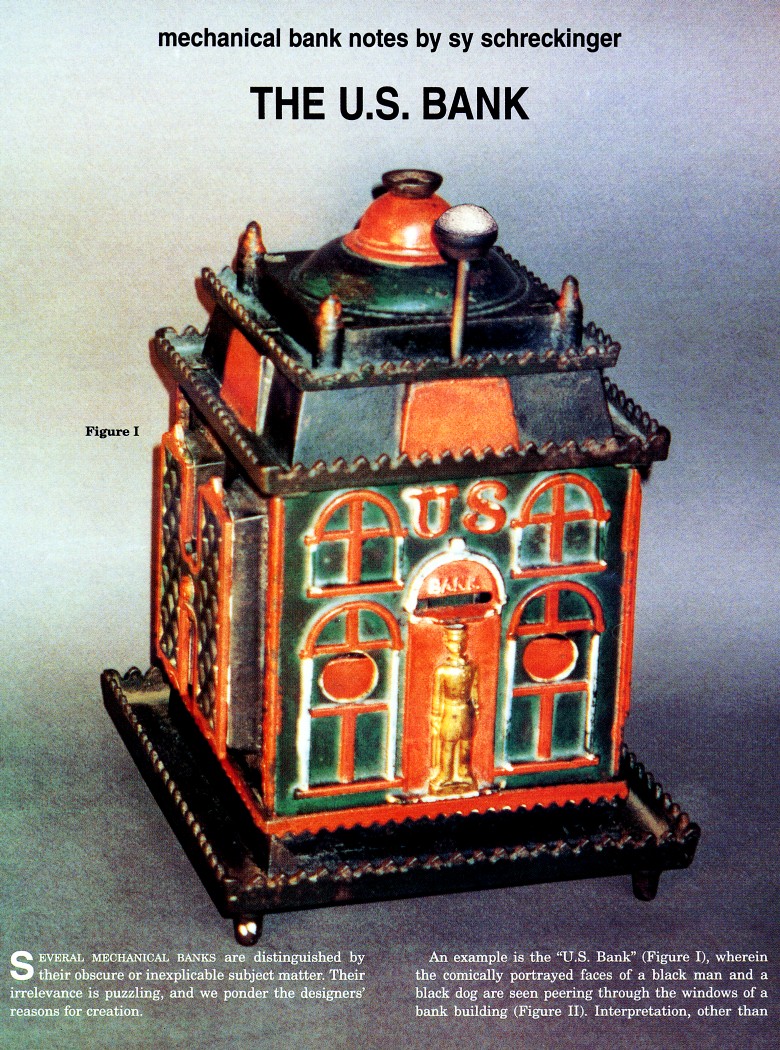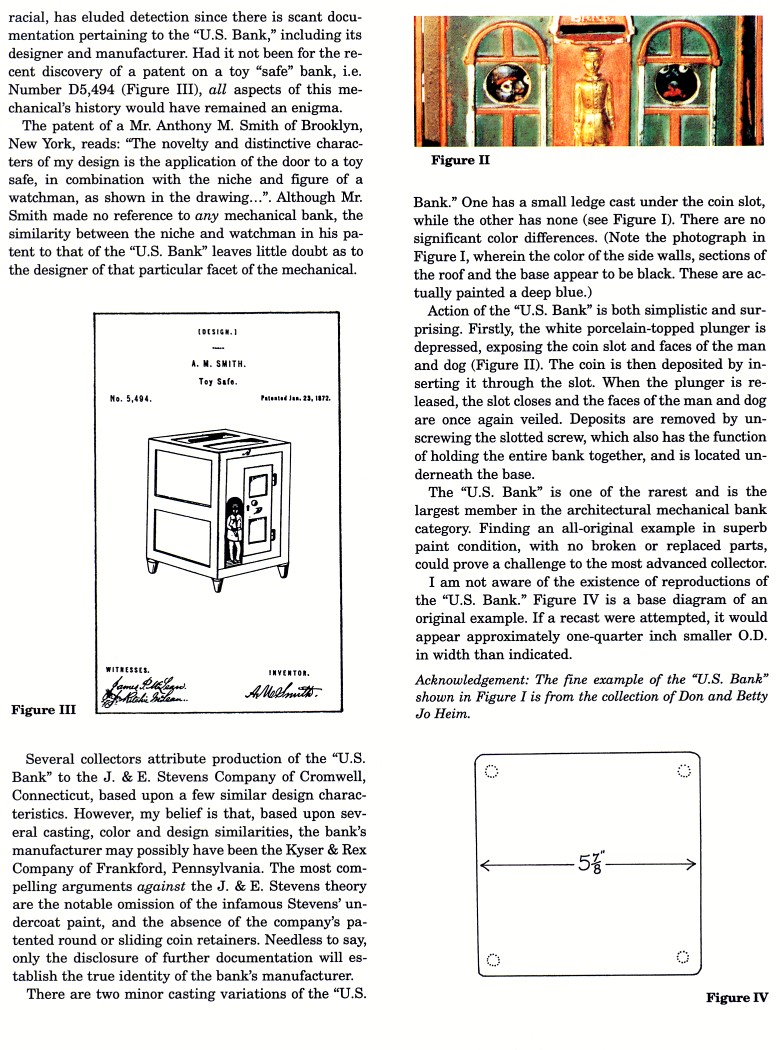|
The U.S. Bank
by Sy Schreckinger – ANTIQUE TOY WORLD Magazine – June, 1996
Several mechanical banks are distinguished by their obscure or
inexplicable subject matter. Their irrelevance is puzzling and we ponder
the designers' reasons for creation.
An example is the "U.S. Bank" (Figure I), wherein the comically
portrayed faces of a black man and a black dog are seen peering through
the windows of a bank building (Figure II). Interpretation, other than
racial, has eluded detection since there is scant documentation pertaining
to the "U.S. Bank," including its designer and manufacturer. Had it not
been for the recent discovery of a patent on a toy "safe" bank, i.e.
Number
D5,494 (Figure III), all aspects of this mechanical's history would
have remained an enigma.
The patent of a Mr. Anthony M. Smith of Brooklyn, New York, reads:
"The novelty and distinctive characters of my design is the application of
the door to a toy safe, in combination with the niche and figure of a
watchman, as shown in the drawing...". Although Mr. Smith made no
reference to any mechanical bank, the similarity between the niche and
watchman in his patent to that of the "U.S. Bank" leaves little doubt as
to the designer of that particular facet of the mechanical.
Several collectors attribute production of the "U.S. Bank" to the J.
& E. Stevens Company of Cromwell, Connecticut, based upon a few similar
design characteristics. However, my belief is that, based upon several
casting, color and design similarities, the bank's manufacturer may
possibly have been the Kyser & Rex Company of Frankford, Pennsylvania. The
most compelling arguments against the J. & E. Stevens theory are the
notable omission of the infamous Stevens' undercoat paint, and the absence
of the company's patented round or sliding coin retainers. Needless to
say, only the disclosure of further documentation will establish the true
identity of the bank's manufacturer.
There are two minor casting variations of the "U.S. Bank." One has a
small ledge cast under the coin slot, while the other has none (see Figure
I). There are no significant color differences. (Note the photograph in
Figure I, wherein the color of the side walls, sections of the roof and
the base appear to be black. These are actually painted a deep blue.)
Action of the "U S Bank" is both simplistic and surprising. Firstly,
the white porcelain-topped plunger is depressed, exposing the coin slot
and faces of the man and dog (Figure II). The coin is then deposited by
inserting it through the slot. When the plunger is released, the slot
closes and the faces of the man and dog are once again veiled. Deposits
are removed by unscrewing the slotted screw, which also has the function
of holding the entire bank together, and is located underneath the base.
The "U.S. Bank" is one of the rarest and is the largest member in the
architectural mechanical bank category. Finding an all-original example in
superb paint condition, with no broken or replaced parts, could prove a
challenge to the most advanced collector.
I am not aware of the existence of reproductions of the "U.S. Bank."
Figure IV is a base diagram of an original example. If a recast were
attempted, it would appear approximately one-quarter inch smaller O.D. in
width than indicated.
Acknowledgement: The fine example of the "U.S. Bank" shown in Figure
I is from the collection of Don and Betty Jo Heim.
|

